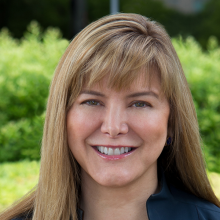When Pamela Arora took on the CIO role at Children's Health in 2007, she took on a big initiative - transitioning the Texas-based pediatric health care system from the paper medical record to an Electronic Medical Record. It’s a never-ending journey – one that is now extending beyond Children’s Health and into the community.
[ See our related article: 4 habits of lifelong learners. ]
Arora recently received the Dallas Nonprofit CIO of the Year Award from the Dallas CIO Leadership Association. We asked Arora to share lessons learned from taking on such a massive project. She also shares some guidance on how to get your employees to take on stretch assignments that benefit both them, and the organization.
The Enterprisers Project (TEP): The transition to the Electronic Medical Record (EMR) was a massive project for your IT org. What advice would you pass along to other CIOs undertaking transformative projects such as these? Anything you know now that you wished you knew at the beginning that could have saved you time or frustration?

Arora: I’d advise other CIOs that it’s the business (in our case the clinical also) and not IT that should develop the standards, Key Performance Indicators (KPIs), and goals. Your role as a CIO is to be a coach and support those goals while also ensuring your team understands its role is to support the much bigger picture. You’ve heard the phrase, “You can’t want it for them.” If you overstep ownership of the system (without having appropriate buy-in), the use of an IT tool won’t reach its full potential.
When it comes to transformative projects such as an EMR deployment, you can save a great deal of frustration and time if everyone involved knows the project costs. It’s equally important to ensure that stakeholders know the cost of delays because indecision can be very expensive. The bottom line: knowing the costs and impacts of indecision can help leaders and front-line staff better manage the cost of the project. If you can accomplish this, you can help maintain focus and help identify issues that impact scope and ultimately the price paid for a solution.
Another piece of advice I’d pass along is the importance of managing impact to your organization when enhancing a system. Our EMR vendor partner is helping us lessen the disruption of system enhancements by moving to a quarterly upgrade schedule instead of an annual cycle. We welcome this change because it allows us to be more nimble with system enhancements, create a much smaller disruption to our operation, and yield a higher impact with quicker delivery of new features. We owe it to our patients to bring advancements as quickly as possible that improve safety, quality, convenience, and value.
TEP: You have been known to move talent to other parts of the organization to grow their skills and expose them to new ways of thinking. How do you get your staff comfortable with taking on a new role that may be beyond their comfort zone? Any guidance for CIOs who may want to do more of this but without losing productivity?
Arora: When growing your team’s capabilities, perpetually staying in the comfort zone stunts growth. That’s why I often ask my team to take on new responsibilities in areas where they aren’t as familiar because gaining breadth of knowledge benefits our organization by infusing new perspectives into established groups. This also helps team members expand their horizons, which adds value to the organization and to their individual careers.
When it comes to staff gaining confidence in roles beyond their core, the key is leadership and peers providing frequent feedback and encouragement. Once the team member gains comfort with the new responsibilities, they also tend to be more sympathetic when one of their peers is placed in a similar position of stretching their capabilities – and they then help serve as an ally to support their colleague.
If a CIO views this type of talent development as a potential drain on productivity, I’d challenge them to flip their thinking. Productivity can be unfavorably affected by someone who isn’t able to think outside of their own area because they may be unable to consider a bigger picture perspective. Certainly, there can be legitimate productivity issues when you place a team member in a new area—this is the learning curve. But in the end, the expanded knowledge and perspective the team member gains provides a much higher benefit to the organization.
Flexibility of thinking starts at the top. One area of pride for Information Services (IS) is that we have seeded several well-run teams that were originally grown in our IS department. For example, our enterprise Learning Institute grew from our IS Training team, the Enterprise Transformation Office that houses our enterprise PMO grew out of the Information Services PMO, our analytics department was built entirely off of the Analytics team in IS, and the Telemedicine/Telehealth department started as a small telemedicine team in Information Services. While the core infrastructure remains in IS, these disciplines benefit from a “systemness” approach that integrates other areas. I also have as many examples where our IS team has taken on new duties to include areas such as medical records and Healthcare Technology Management (biomedical devices).
These examples are a tremendous source of pride for me and my team, as these groups have helped us evolve where we are more effectively delivering on our mission of making life better for children.
TEP: As a CIO, what is something that you hear people say that you wish they’d stop saying - your biggest pet peeve about a phrase or word or expression used in IT?
Arora: I don’t have many pet peeves, but if I had to pick one, I’d say my biggest one is a “call us if you need us” mentality. In my view, IT professionals, leaders, and IT tools are there to support – I believe we should take a proactive approach by asking what the organization needs, how we can help, and then working to provide the tools needed to deliver on the organization’s mission and goals. I often talk about the “path to the patient”– in many cases, people may not see how technology contributes to patient care, but we can show a direct path to the patient impact through the use of technology, and that’s one of the things I’m most proud of as a CIO and leader at Children’s Health.
[ Are you ready to discuss cloud security concerns? Get our concise guide (.PDF) to learn from the experts: Hybrid cloud security: 5 questions skeptics will ask. ]






